This document discusses random functions in Python. It explains how to import the random module and describes several functions:
- random() generates random float numbers between 0 and 1
- randrange() returns random integers within a given range
- randint() returns random integers within a range similar to randrange()
Examples are provided to demonstrate how to use these functions to generate random numbers between certain values or in lists.

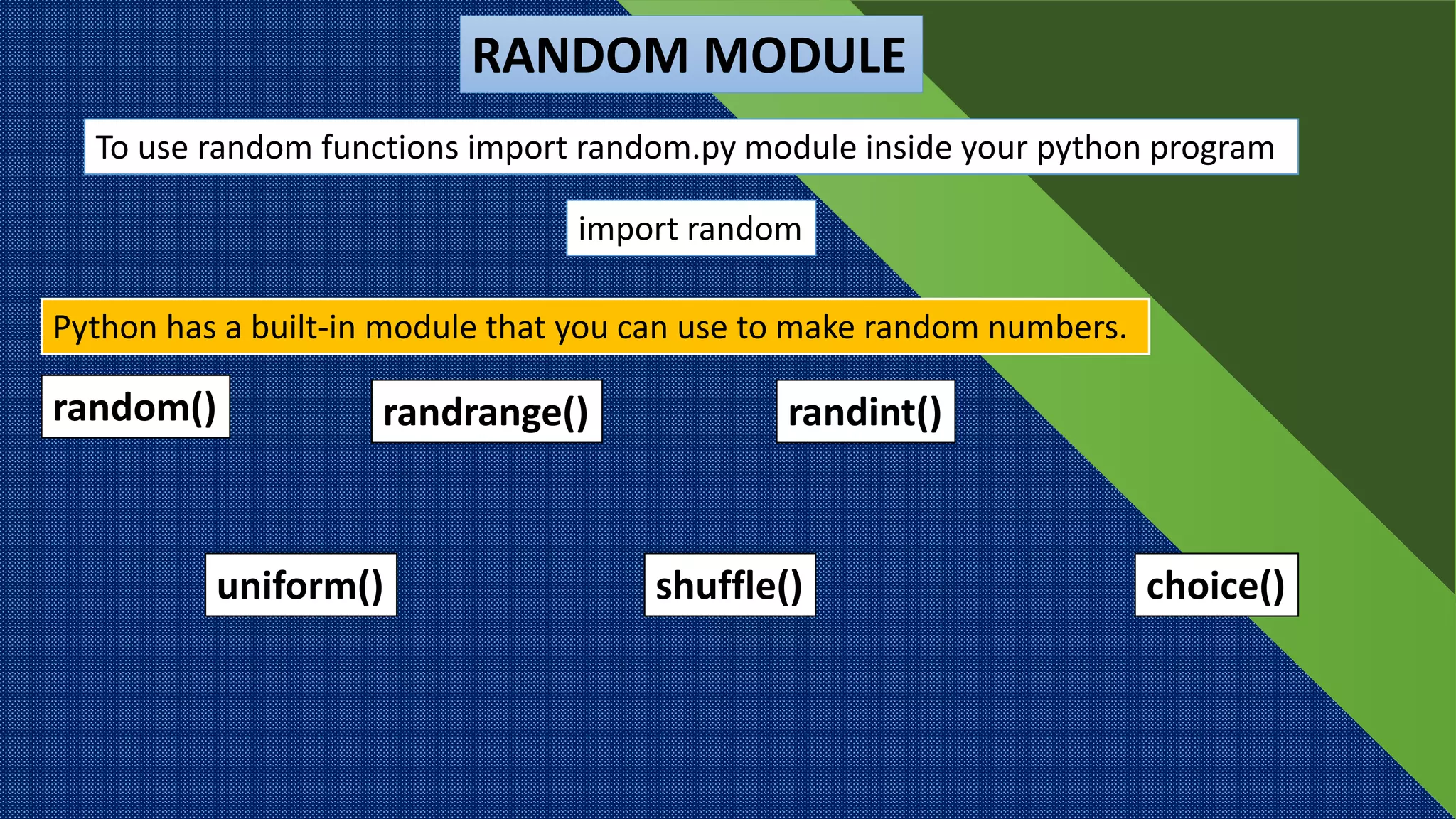
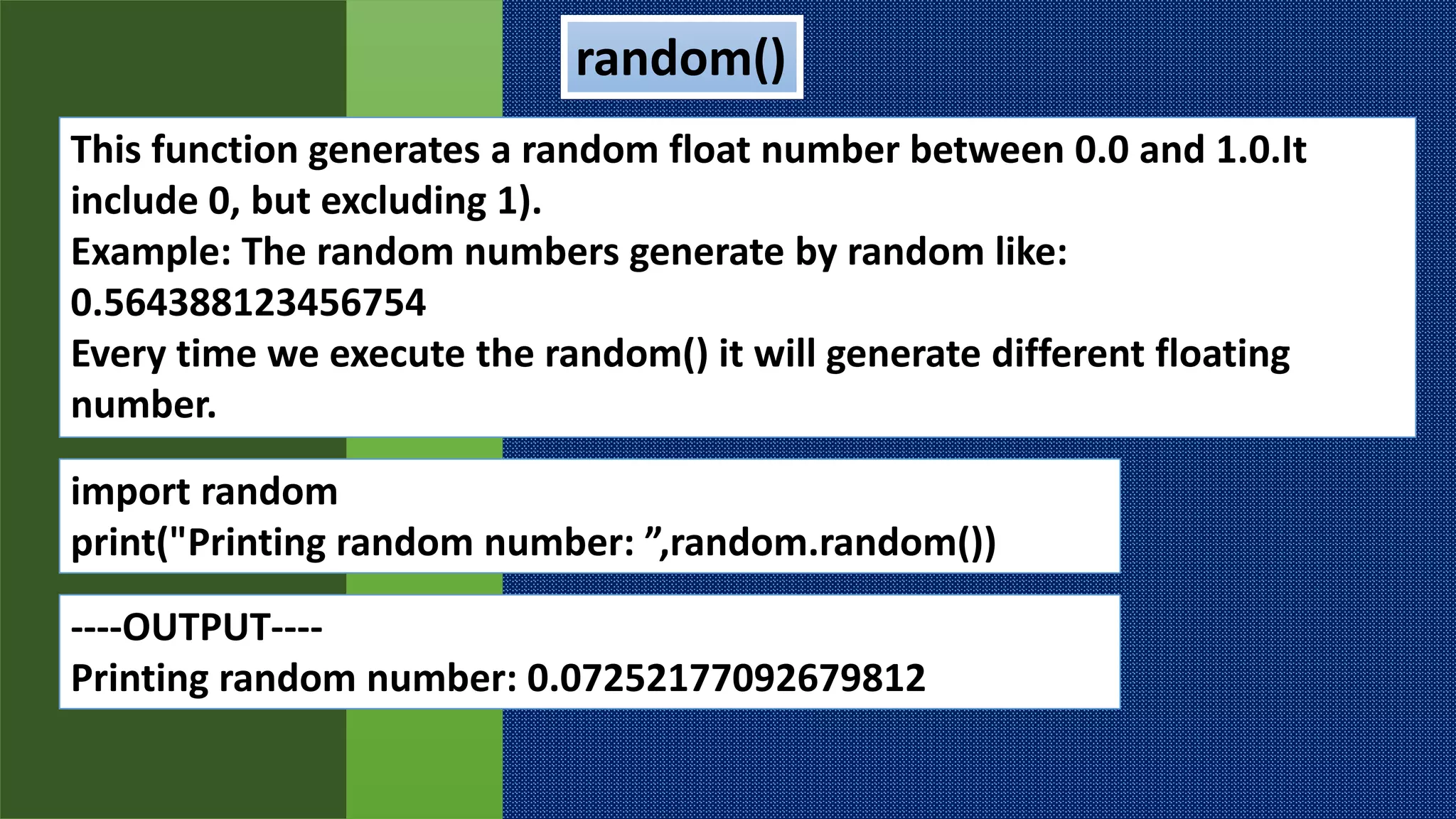
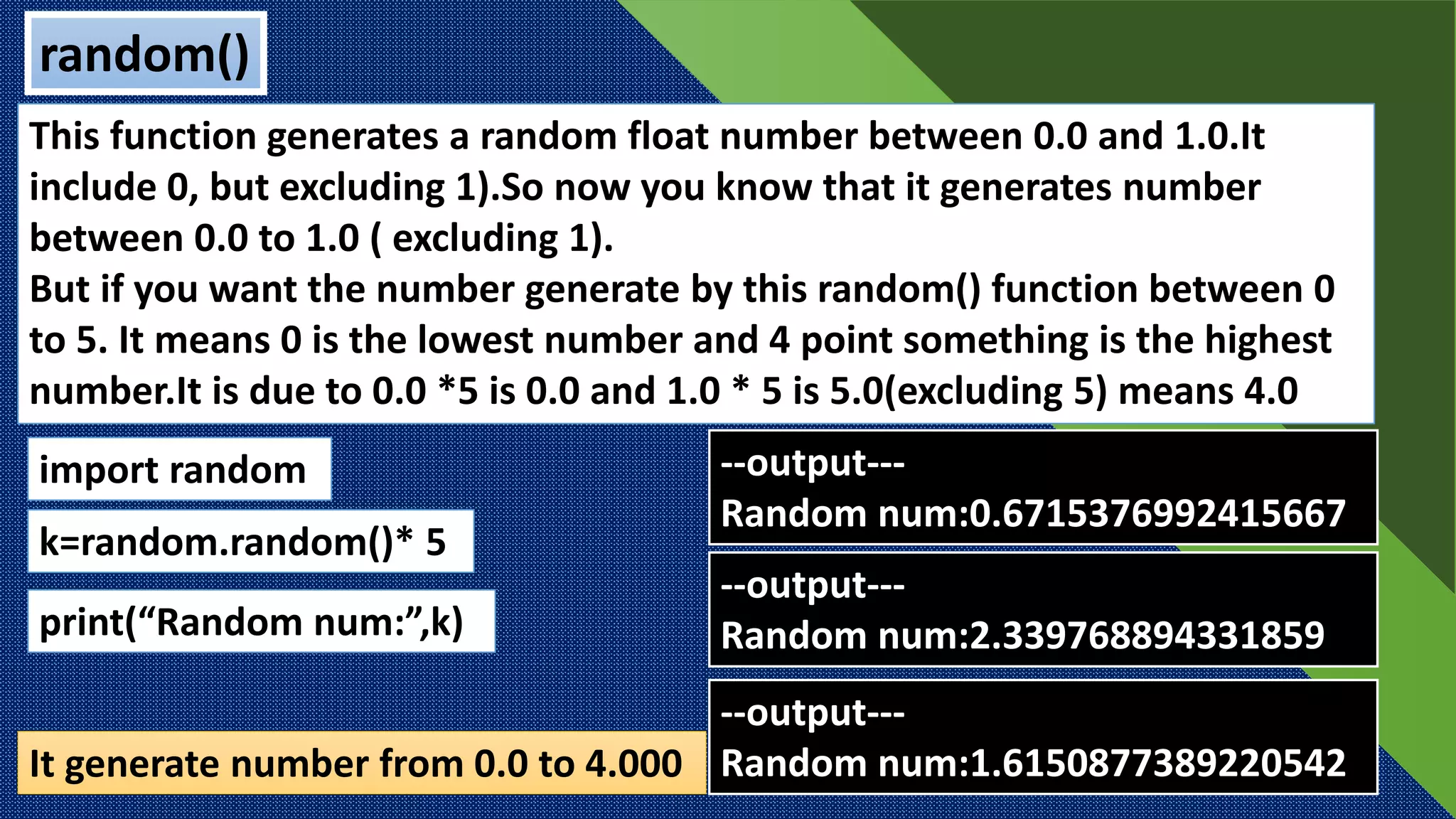
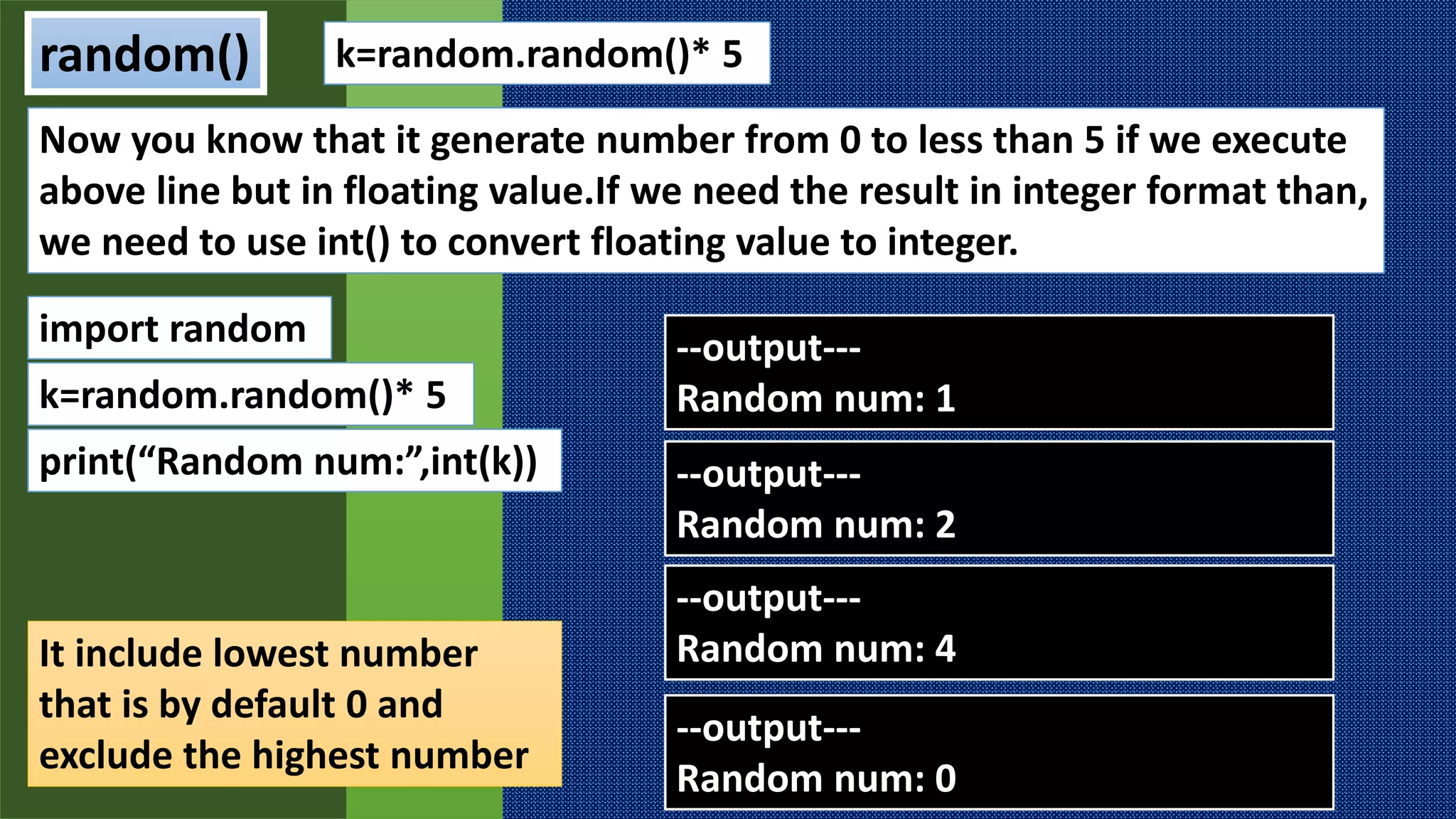
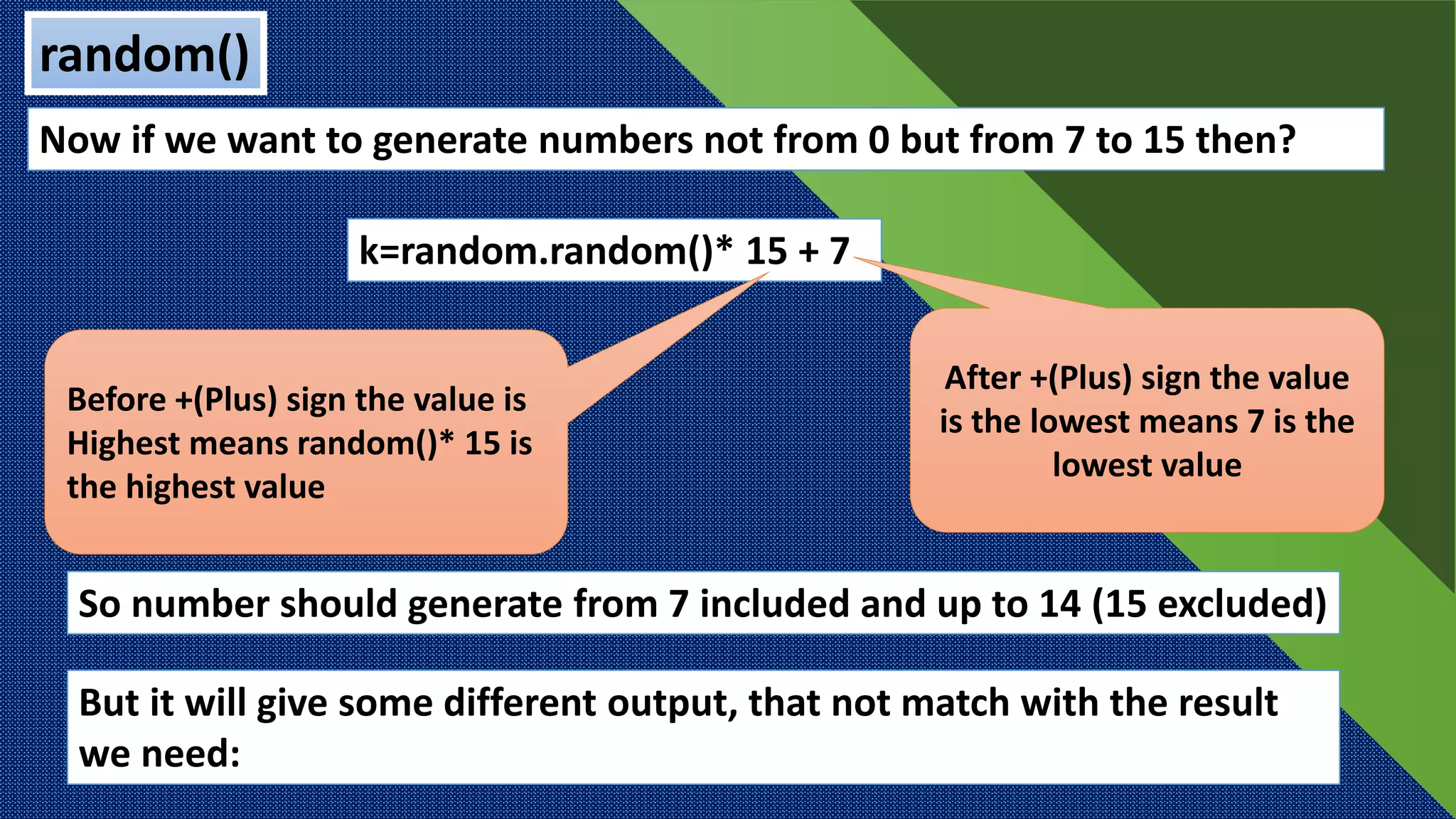
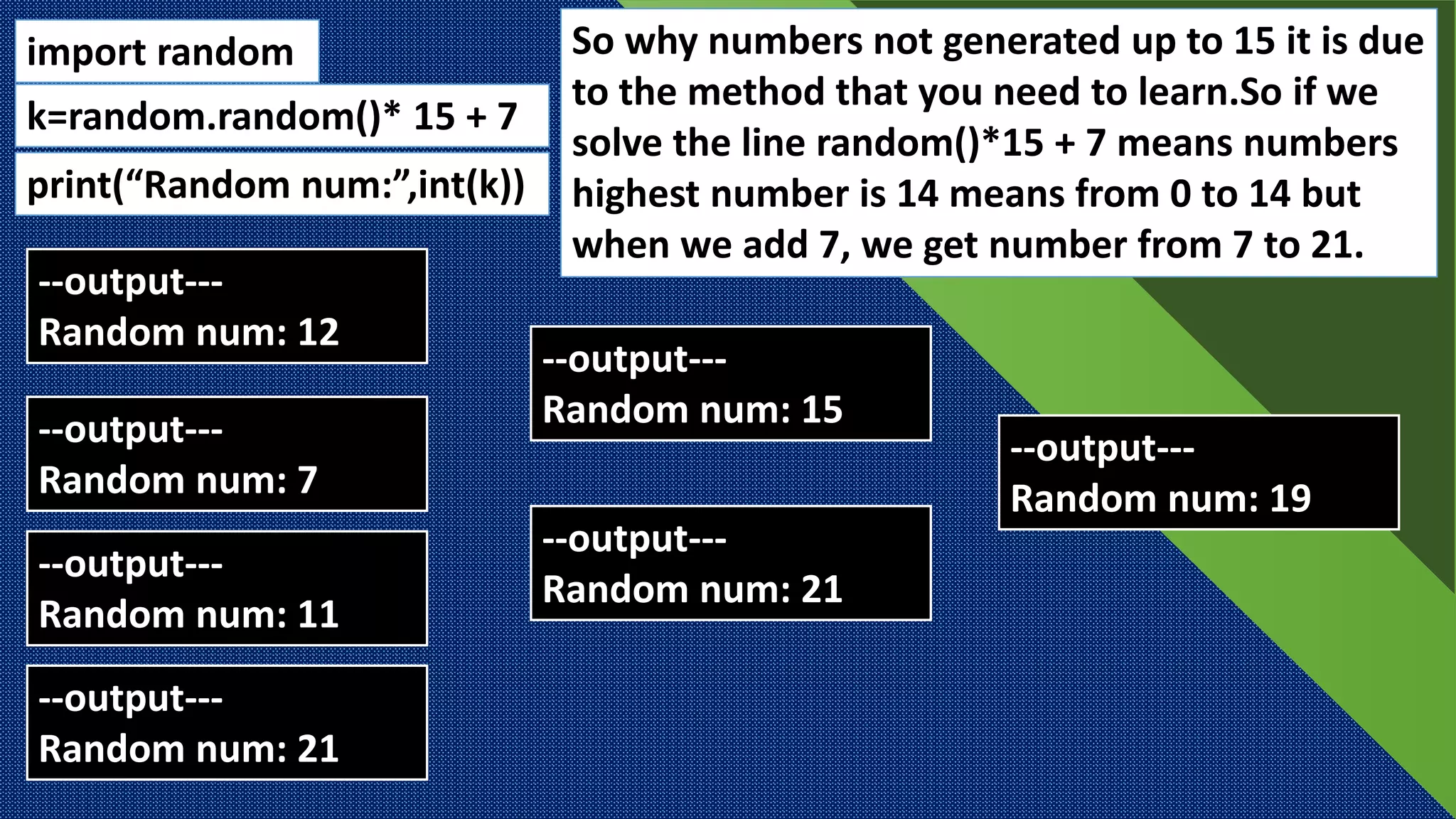
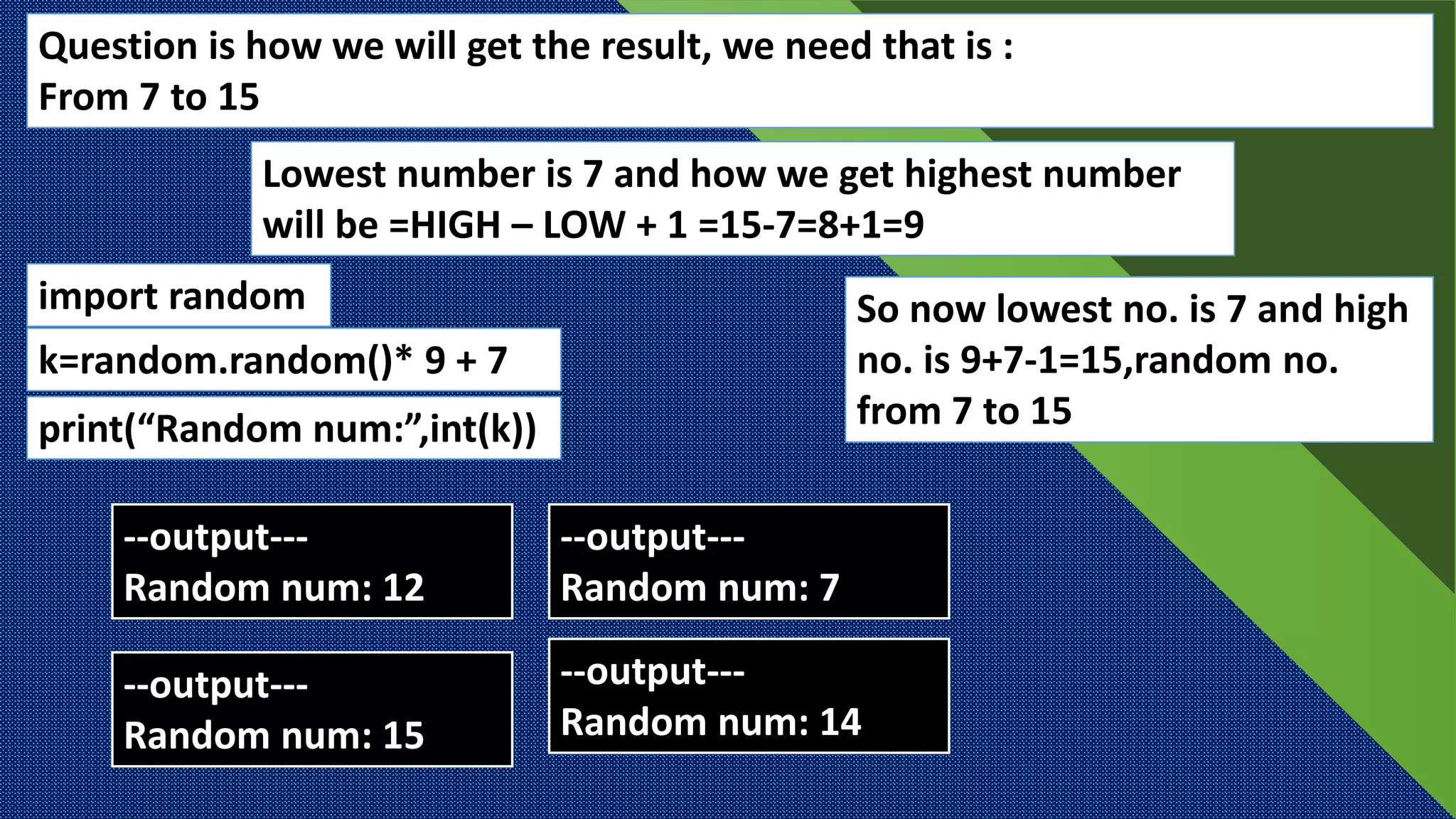
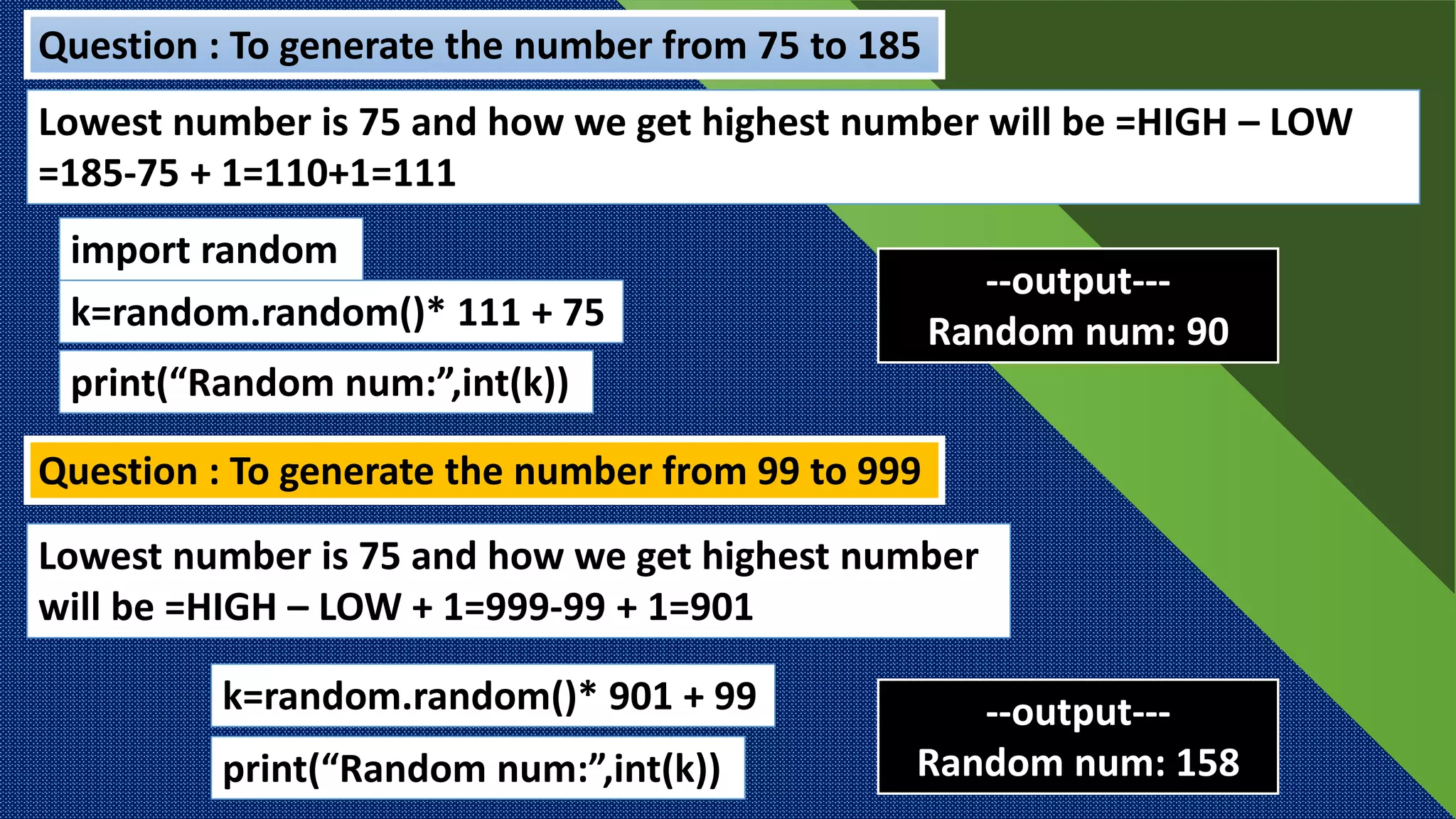
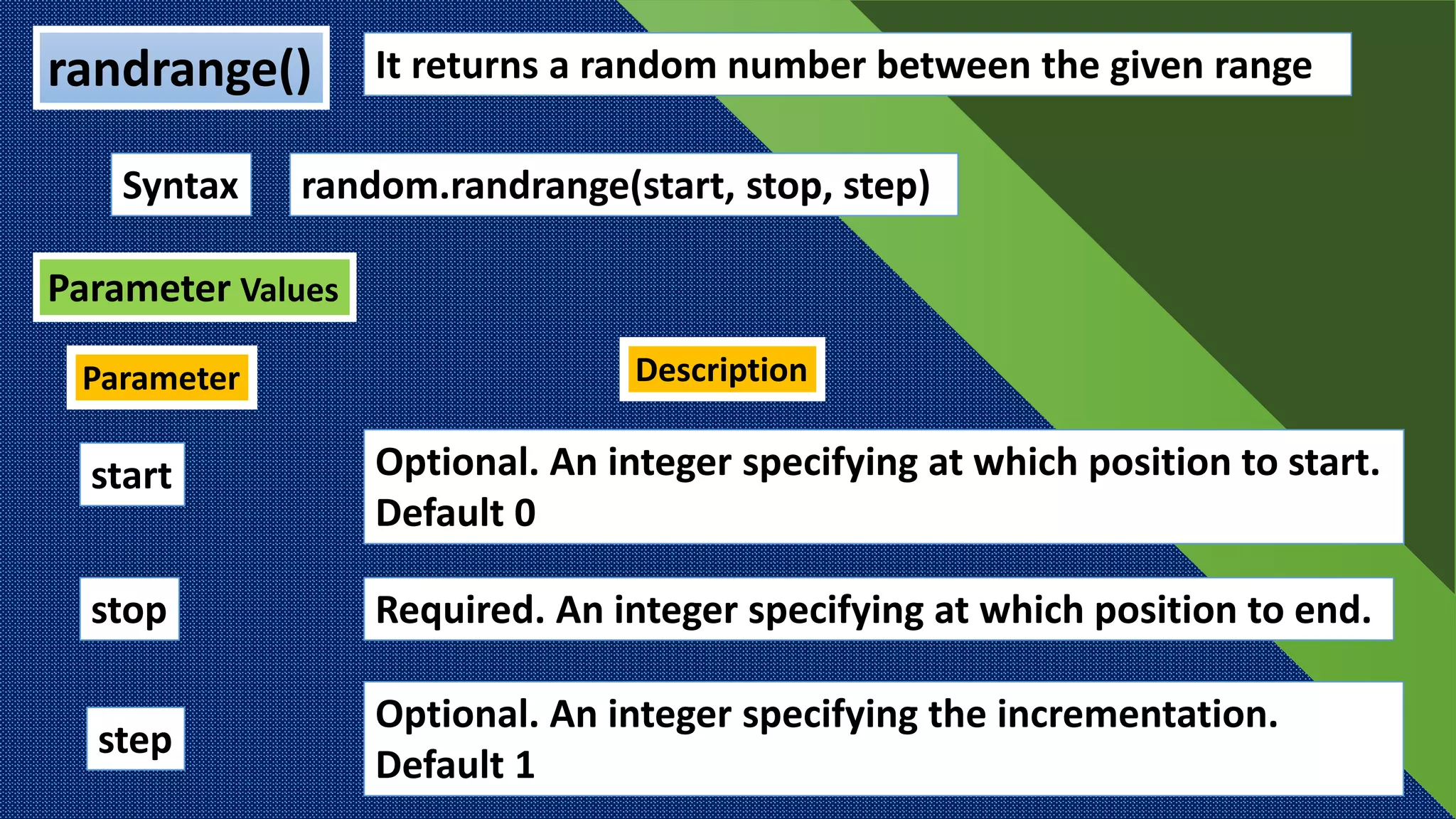
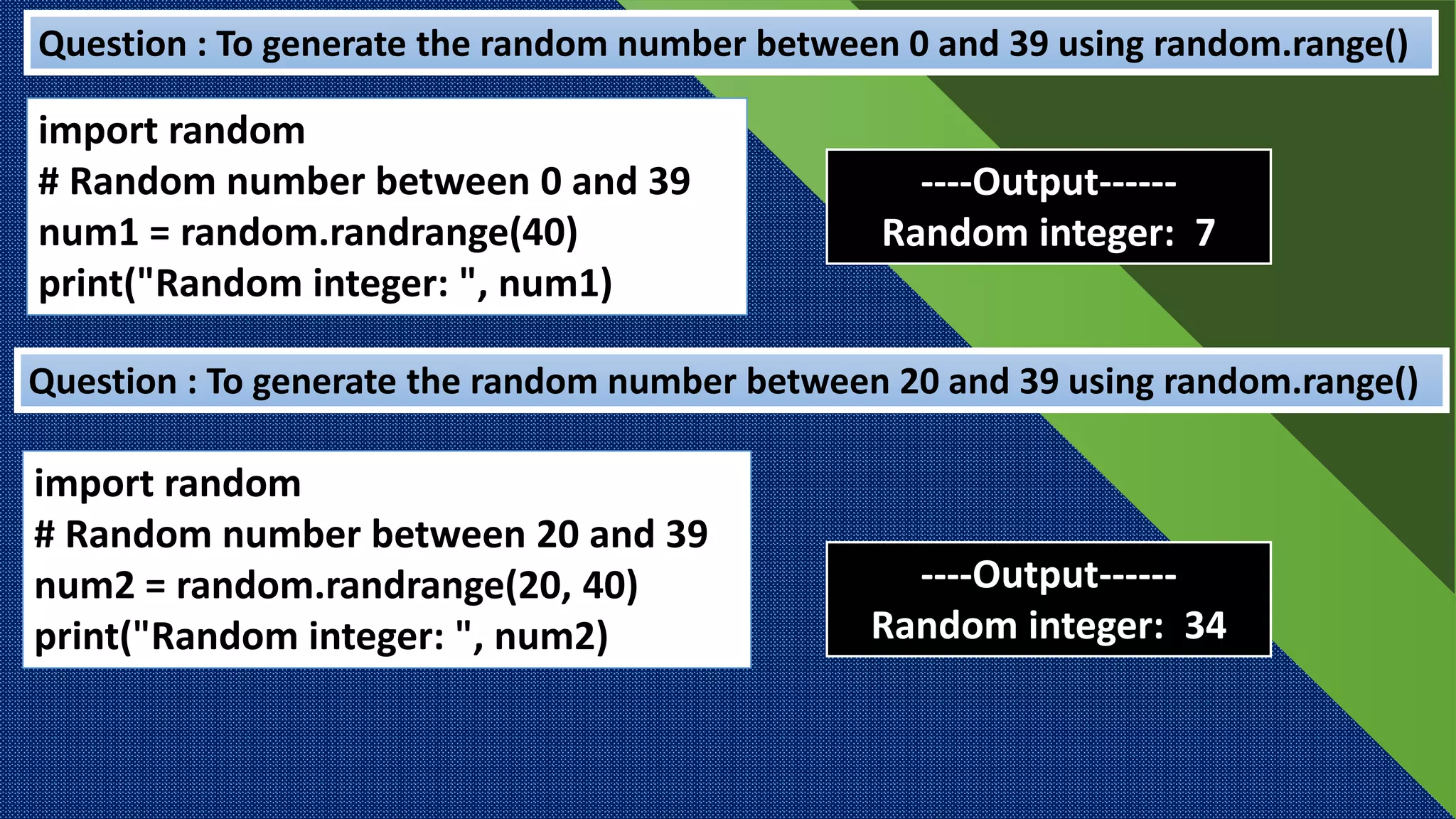
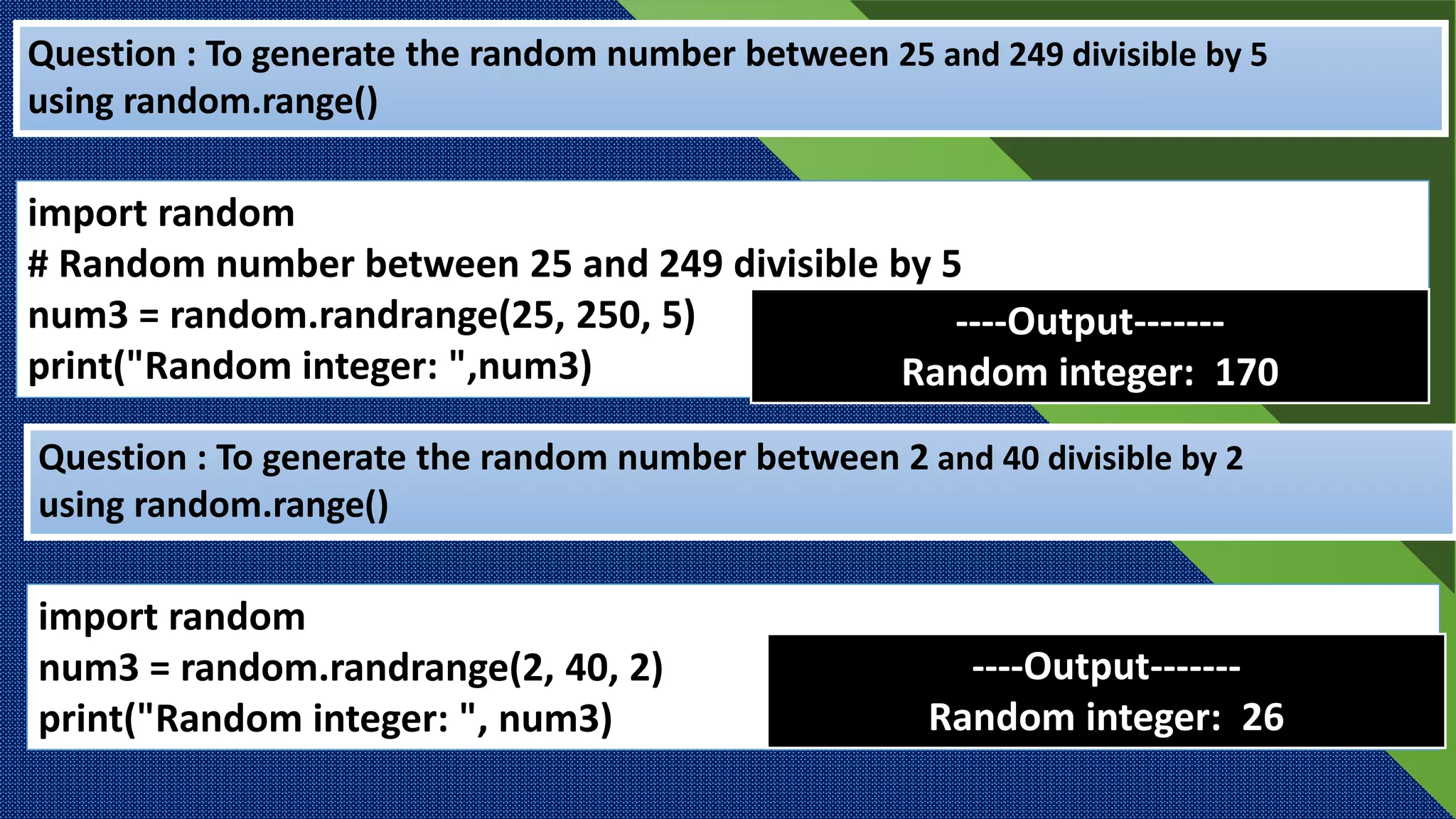
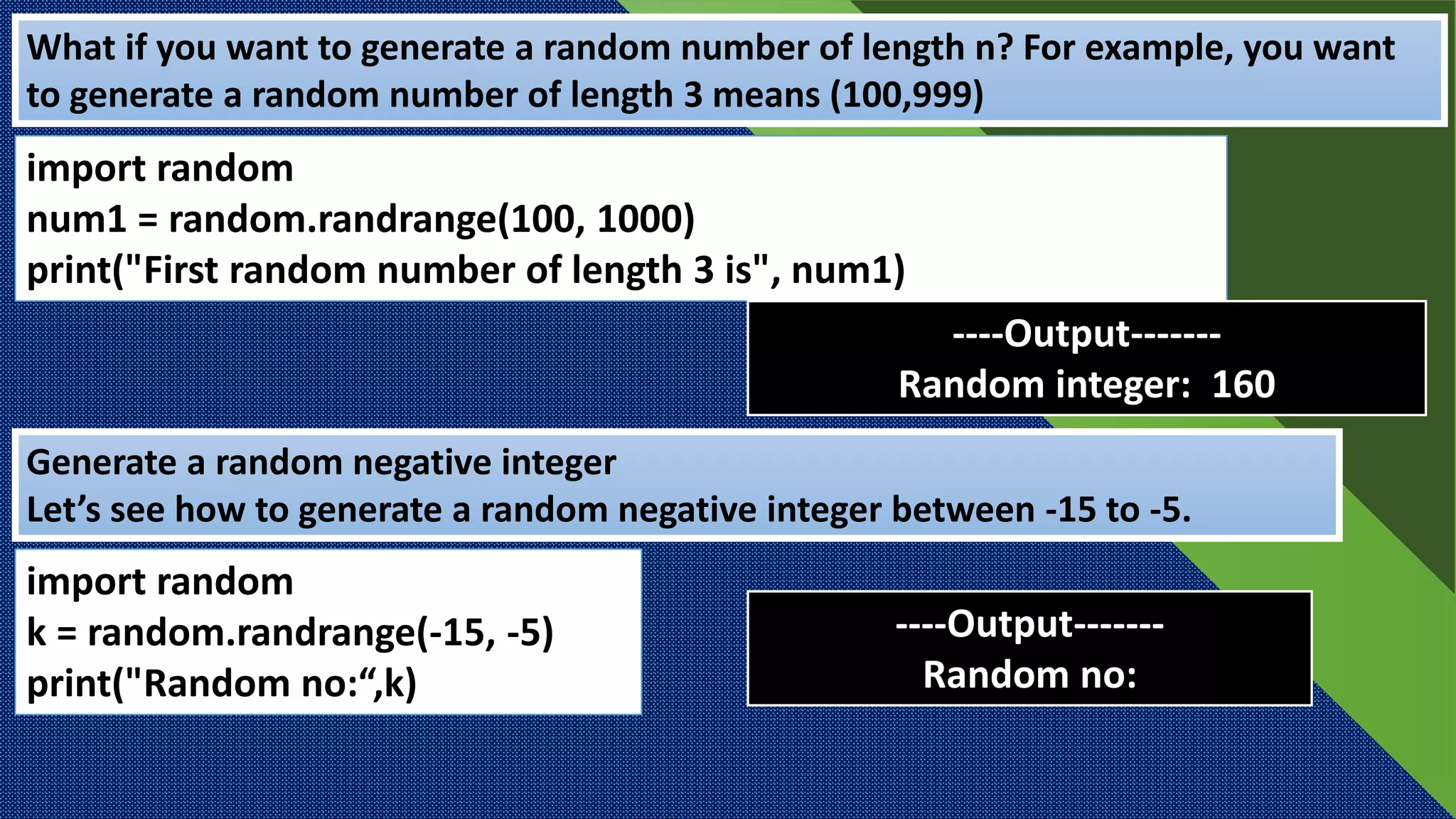
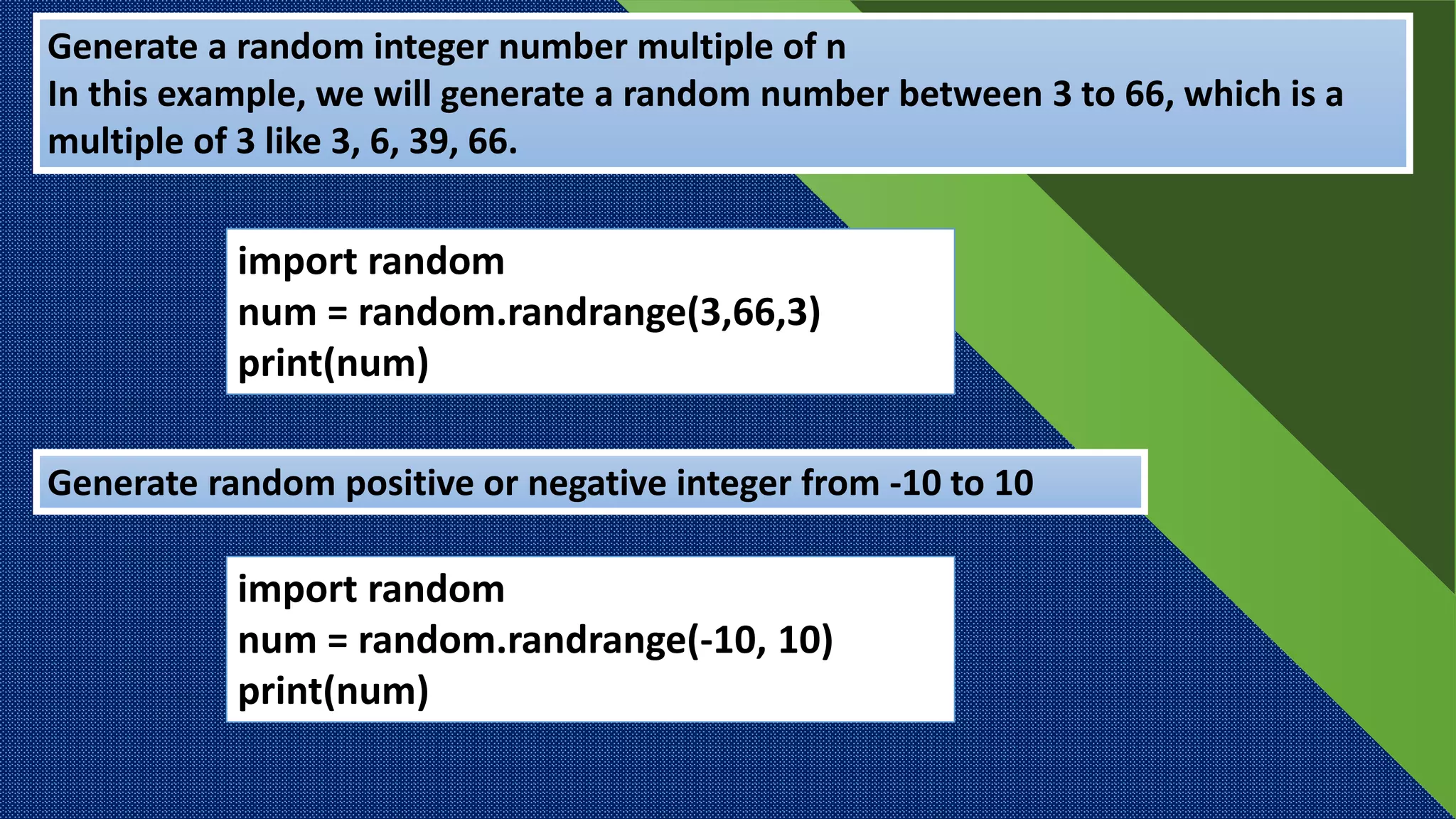
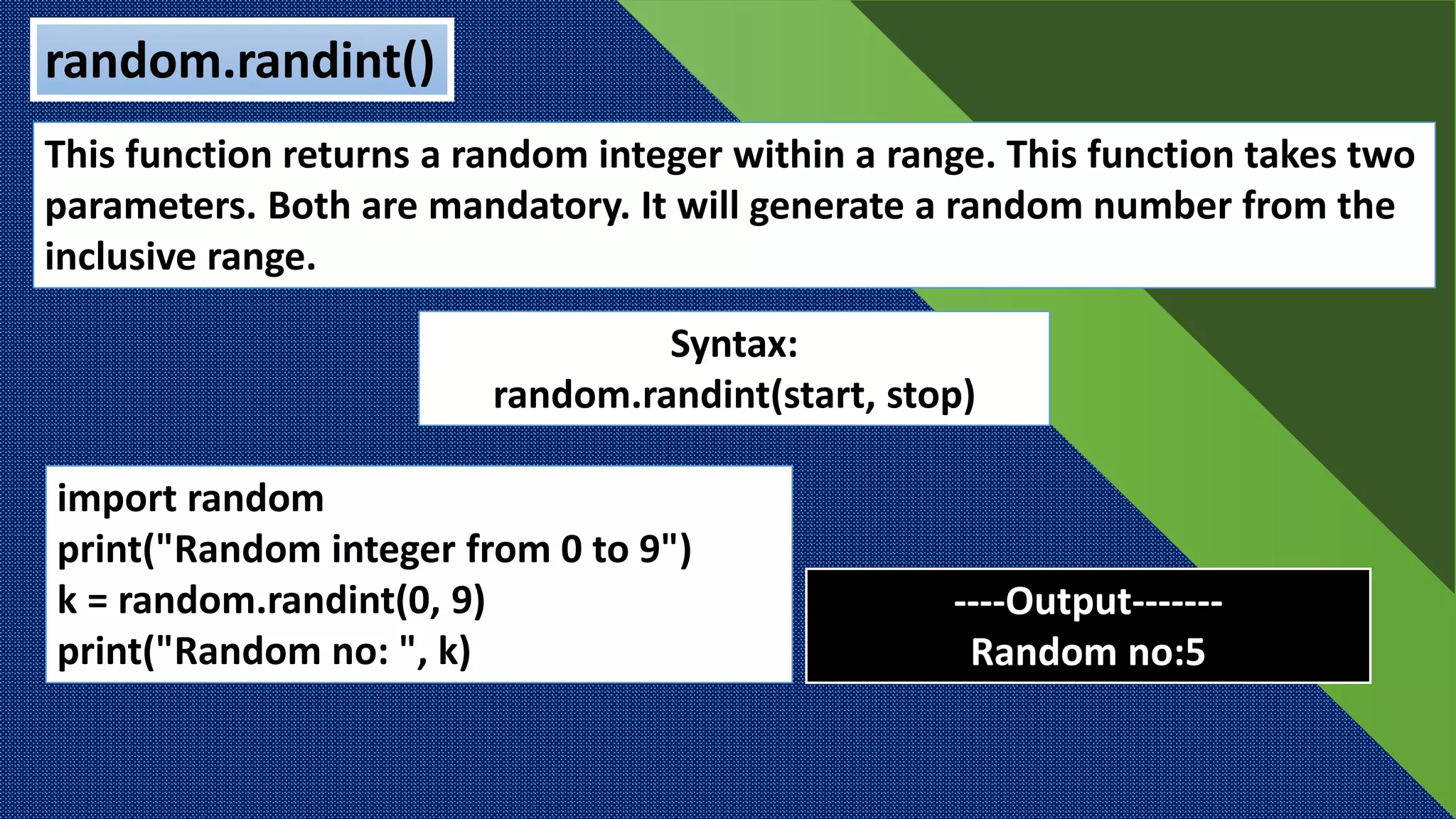
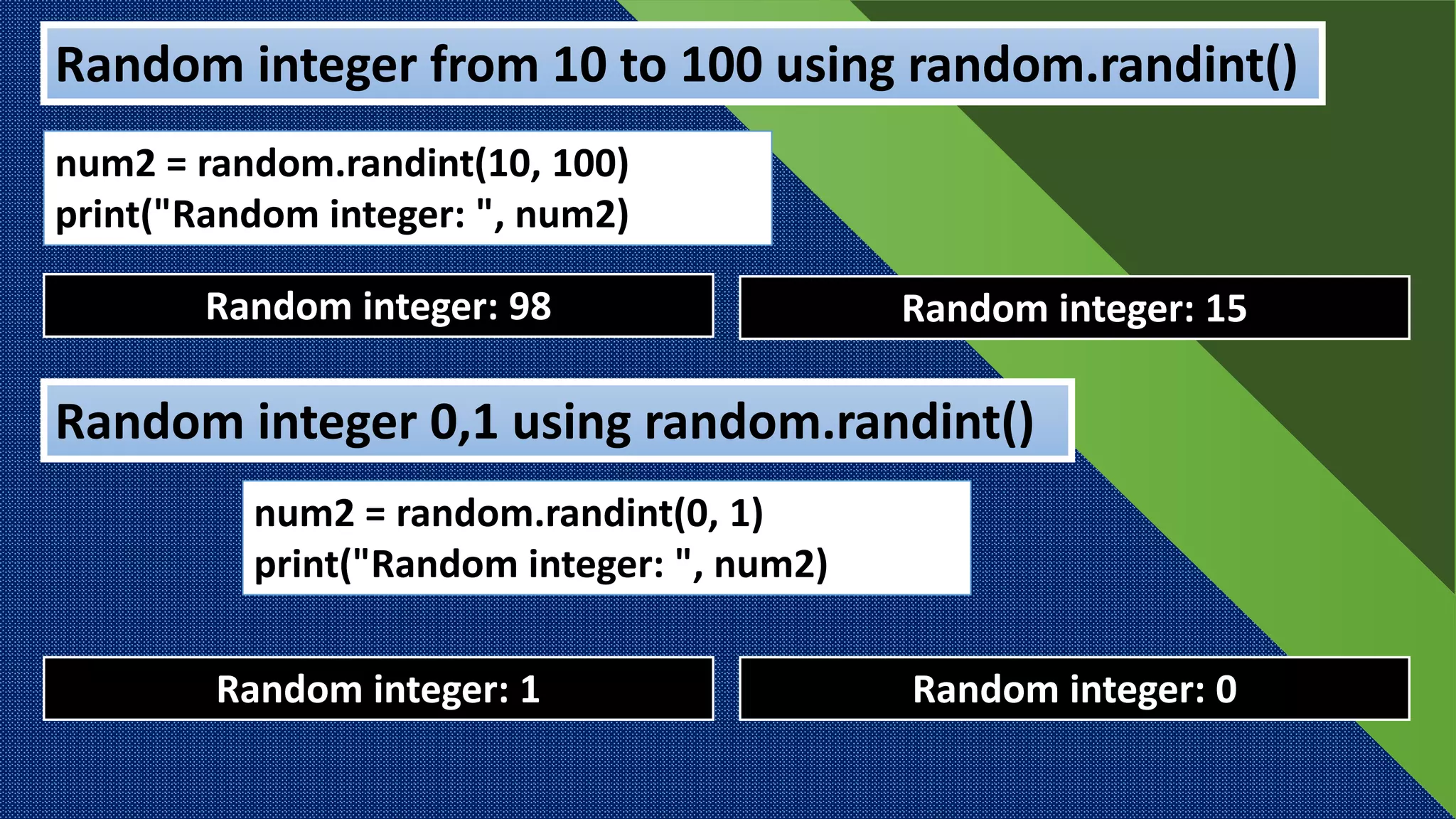
![Program to create random numbers list of 10 numbers from
10 to 100
import random
no = []
for i in range(0, 10):
no.append(random.randint(10, 100))
print("Print list of 10 random numbers")
print(no)
Print list of 10 random numbers
[36, 80, 57, 98, 55, 20, 38, 64, 87, 39]
i=0
i=1
i=2
i=3
i=4
i=5
i=6
i=7
i=8
i=9
no.append(random.randint(10,100))
no.append(random.randint(10,100))
no.append(random.randint(10,100))
no.append(random.randint(10,100))
no.append(random.randint(10,100))
no.append(random.randint(10,100))
no.append(random.randint(10,100))
no.append(random.randint(10,100))
no.append(random.randint(10,100))
no.append(random.randint(10,100))
[ ]36 ,80,57,98,55,20,38,64,87,39](https://image.slidesharecdn.com/functions2-200924082810/75/FUNCTIONS-IN-PYTHON-RANDOM-FUNCTION-17-2048.jpg)
![What possible outputs(s) of the following code? Also specify the maximum and minimum
values that can be assigned to variable NUM
import random
NAV=[“LEFT”,”FRONT”,RIGHT”,”BACK”];
NUM=random.randint(1,3)
NAVG=“”
for C in range(NUM,1,-1):
NAVG=NAVG+NAV[C]
print (NAVG)
(i) BACKRIGHT (ii) BACKRIGHTBACK
(iv) BACK
(iii) LEFTFRONTRIGHT
0 1 2 3 4
0 L E F T
1 F R O N T
2 R I G H T
3 B A C K
NUM
321
CONDITIONS:
IF randint() generate 1 then range(1,1,-1)
means 0, it does not run
IF randint() generate 2 then range(2,1,-1)
means 2 only, “RIGHT”
IF randint() generate 3 then range(3,1,-1)
means 3,2 only, “RIGHT” ,”BACK”
13](https://image.slidesharecdn.com/functions2-200924082810/75/FUNCTIONS-IN-PYTHON-RANDOM-FUNCTION-18-2048.jpg)
![What possible outputs(s) of the following code? Also specify the maximum and minimum
values that can be assigned to variable NUM
import random
P=“MY PROGRAM”
x=0
while(P[x] != ‘R’):
a=random.randint(0,3)+5
print(P[a], “-”,end=“”)
x=x+1
(i) R-P-O-R- (ii) P-O-R-Y-
(iv) A-G-R-M-
(iii) O-R-A-G-
0 1 2 3 4 5 6 7 8 9
M Y P R O G R A M
MIN: 5 MAX: 8
a random no. starts from 5 to 8 means 5,6,7,8](https://image.slidesharecdn.com/functions2-200924082810/75/FUNCTIONS-IN-PYTHON-RANDOM-FUNCTION-19-2048.jpg)
![What possible outputs(s) are expected to be displayed on screen at the time of execution
of the program from the following code? Also specify the maximum values that can be
assigned to each of the variables FROM and TO.
import random
AR=[20,30,40,50,60,70];
FROM=random.randint(1,3)
TO=random.randint(2,4)
for K in range(FROM,TO+1):
print (AR[K],end=”#“)
(i) 10#40#70#
(ii) 30#40#50#
(iii) 50#60#70#
(iv) 40#50#70#
FROM random no. 1, 2, 3
TO random no. 2, 3, 4
0 1 2 3 4 5
20 30 40 50 60 70
Now loop starts from FROM(1,2,3)
And Ends at TO+1 means if TO is (2,3,4)
Inside range second value run less than given
number(2 means 1, 3 means 2 and 4 means
3)that why we put TO+1(2,3,4)
If FROM random generate no 1 means AR[1]=
30 or 2 means AR[2]=40 or AR[3]=50
If TO random generate no 2 means AR[2]= 40 or
3 means AR[3]=50 or AR[4]=60](https://image.slidesharecdn.com/functions2-200924082810/75/FUNCTIONS-IN-PYTHON-RANDOM-FUNCTION-20-2048.jpg)